The Legislative branch plays a central role in our democracy, but for decades Congress has systematically underfunded congressional operations as compared to the rest of government.
The chart below shows discretionary non-defense discretionary spending from 1995-2020 (in constant dollars). During that quarter-century, non-defense discretionary spending increased by 58%, but spending for the legislative branch increased only by 27%.
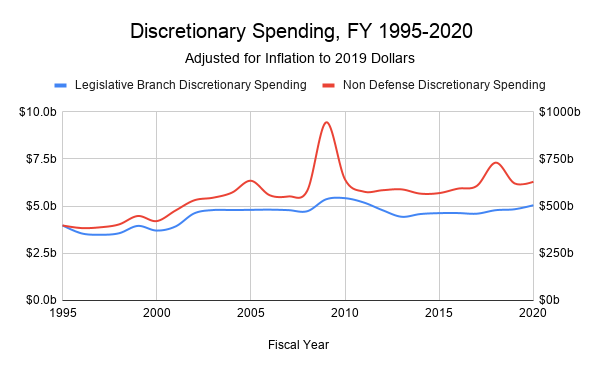
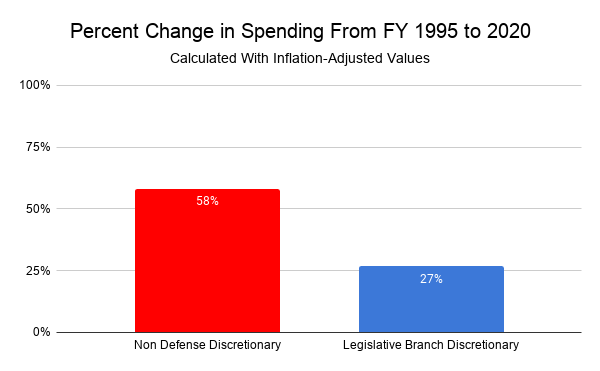
The legislative branch receives only 0.7% of non-defense discretionary funding. Total non-defense discretionary funding for FY 2020 was $621.5 billion; the legislative branch received just under $5 billion.
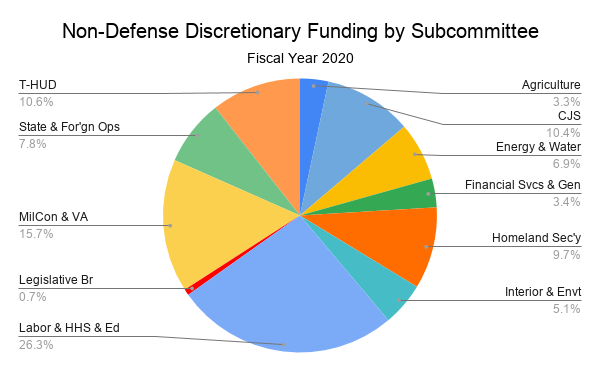
Within the legislative branch, 20% of its total funding goes towards the personal offices in the House and the Senate, at $520m each, which covers all member representational costs. Major costs for Congress come from its support agencies: the Library of Congress gets 15% of the budget ($728m); the Architect and GAO each gets about 12% (~$610m); and the Capitol Police get 9.5% (~$460m). (The USCP has requested a $56m increase for FY 2021.)
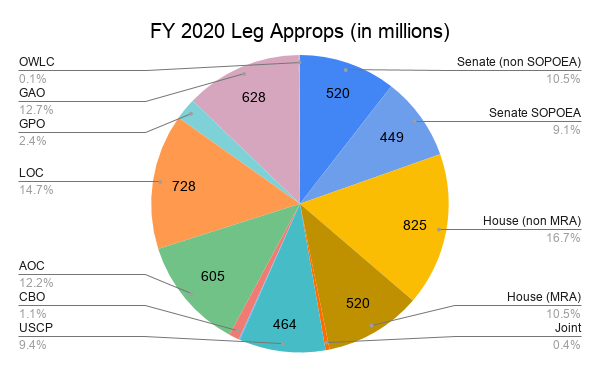
Particularly interesting, however, is the spending trend. The two major cost drivers inside the legislative branch are the Capitol Police and the Architect of the Capitol. By comparison, House MRA’s and House committee funding levels are unchanged, even though costs of living in Washington have increased, as has the number of constituents served by each office.
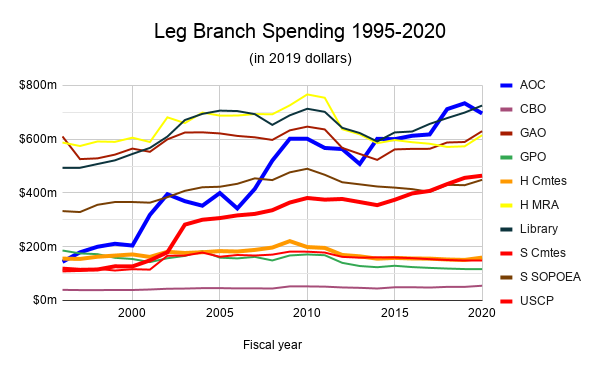
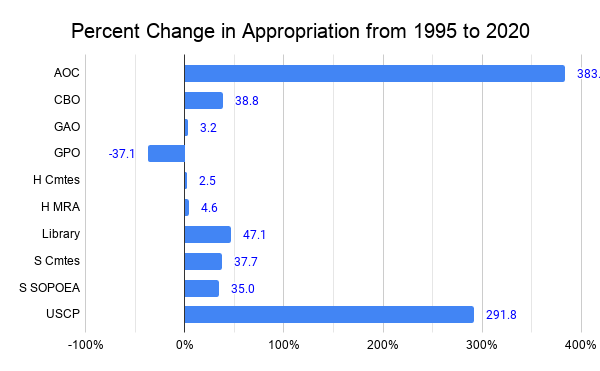
Let’s take a closer look at the spending trends for personal and committee offices in the House. Funding levels for the MRA in the House is actually significantly lower than a decade ago. For FY 2020, the MRA is set at $615m, but it was $726m in FY 2010 (adjusted for inflation), which is a 15% reduction. It’s even lower than FY 2013, which was at $618m.
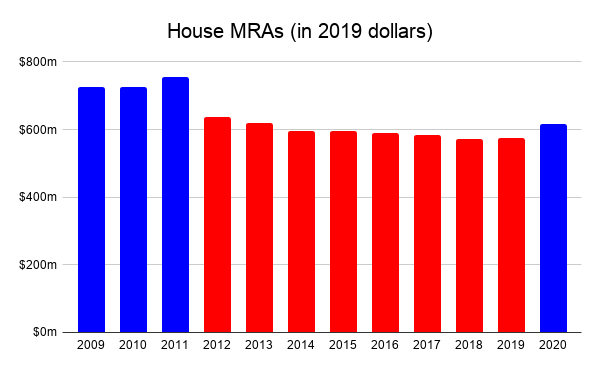
Spending on House committees is down by $153m since 2009/10, a 35% reduction.
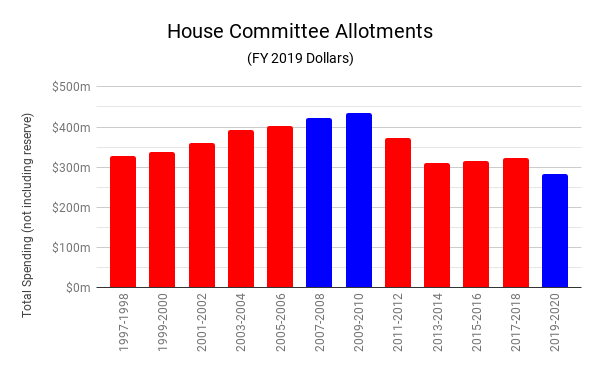
The Senate did a somewhat better job of retaining capacity in its personal offices, but not in its committees. For FY 2020, the SOPOEA is set at $449m, but it was $490m in FY 2010 (adjusted for inflation), which is an 8% reduction. (There’s an automatic adjustment for population size for personal office staff working on constituent matters.)

Spending on Senate committees is down by $113m since 2009/10, a 35% reduction.

(This report can be downloaded here.)